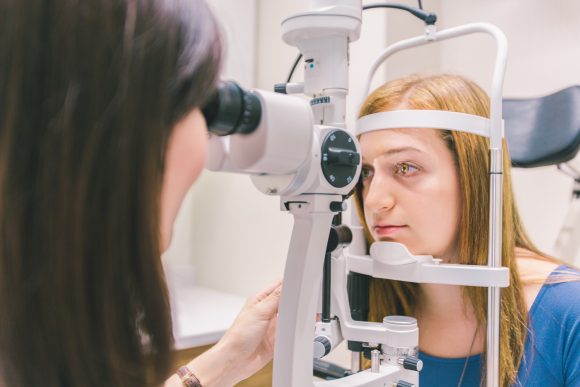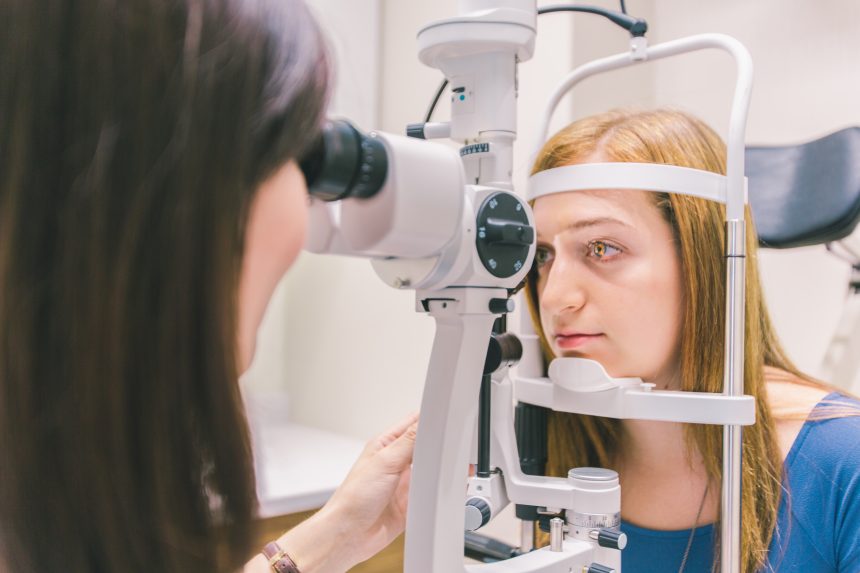Dry eye disease, a chronic and typically progressive condition, is common and has a significant impact on quality of life. The tear films that coat the front surface of our eyes keep our eye healthy and comfortable, and are needed for both overall eye health and clear vision. Dry eye occurs when your eyes don’t produce enough tears or produce tears that don’t have the proper chemical composition. Depending on its cause and severity, it may not be completely curable. But in most cases, dry eyes can be managed successfully, usually resulting in noticeably greater eye comfort, fewer dry eye symptoms, and sometimes sharper vision as well.
Dry eye can result from normal aging process, hormonal changes, exposure to certain environmental conditions, problem with normal blinking, or from medications such as antihistamines, oral contraceptives or antidepressants. Dry eye can also be a symptom of general health problems, such as arthritis, or can result from UV exposure and environmental irritants.
Symptoms of dry eye include the following:
| · Stingy/burning sensation
· Gritty/scratchy sensation · Foreign body sensation · Heavy eyes · Fatigued eyes |
· Sore eyes
· Dryness sensation · Red eyes · Photophobia (light sensitivity) · Blurred/fluctuating vision |
During an eye examination, your eye doctor focuses on your general health, use of medications, and your home and work environments to determine what may be causing dry eye symptoms. Your doctor will also use a high-powered microscope and special dyes to evaluate the quality, amount and distribution of tears to detect signs of dry eyes.
The following is a list of most frequently used dry eye treatments that are commonly used by eye doctors to reduce the signs and symptoms of dry eye, depending on the cause(s) and severity of your condition.
- Artificial Tears – Preservative free form is recommended.
- Warm Compresses – Place a hot towel on the eyes for minimum 10 minutes, twice a day.
- Steroid Eye Drops – Steroid eye drops are prescription drops, generally used short-term to quickly manage symptoms.
- Restasis – Prescription eye drop that includes an agent that reduces inflammation associated with dry eye syndrome and helps your body produce more natural tears to keep your eyes moist, comfortable and healthy.
- Punctal plug – A small, sterile device that is inserted into one of the small openings (puncta) of tear drainage ducts that are located in the inner corner of the upper and lower eyelids. Procedure is performed by the doctor.
- Nutritional Supplements – Supplements containing omega-3 fatty acids can decrease dry eye symptoms. Good sources of omega-3s include cold-water fish such as salmon, sardines, herring and cod can help improve the condition. For a vegetarian source of omega-3s, flaxseed oil is an option to relieve dry eye.
If you have mild dry eye symptoms, there are several things you can try to get relief:
Blink more frequently. When using a computer, smart phone or other digital device, we tend to blink our eyes less frequently than normal, which can cause or worsen dry eye symptoms. Make a conscious effort to be aware of this, and blink more often when using these devices.
Take frequent breaks during computer use. A good rule of thumb here is to look away from your screen at least every 20 minutes and look at something that is at least 20 feet from your eyes for at least 20 seconds. It is also known as the “20-20-20 rule,” and abiding by it can help relieve both dry eyes and computer eye strain.



